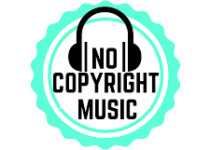Age Restricted YouTube Videos
Table of Contents
Age Restricted YouTube Videos
YouTube is a platform that hosts a diverse range of content, catering to various interests and preferences. While most of the content is appropriate for viewers of all ages, there are some videos that may contain mature or explicit content. To prevent younger audiences from accessing such content, YouTube has implemented an age restriction feature.
Age-restricted YouTube videos are videos that have been deemed inappropriate for younger audiences by YouTube’s guidelines. When a video is age-restricted, viewers are required to sign in to their YouTube account and verify their age before they can access the content. Additionally, age-restricted videos do not appear in search results, and they cannot be shared outside of the YouTube platform.
There are several reasons why a video may be age-restricted. Some of the most common reasons include the use of explicit language, graphic violence, sexual content, or controversial topics. YouTube’s age restriction policy is in place to protect younger audiences from potentially harmful or inappropriate content and to comply with laws and regulations regarding the distribution of such content.
Age-restricted YouTube videos are marked with a warning label that indicates that the content is not suitable for all audiences. This label serves as a reminder to viewers that the video may contain mature content, and it is not recommended for younger audiences. It is important to note that age restrictions are not foolproof, and it is possible for younger viewers to access age-restricted content by lying about their age or using an older viewer’s account.
Content creators have the option to age-restrict their videos if they feel that the content is not appropriate for all audiences. However, age-restricting a video can limit its reach, as it may not be visible in search results or suggested videos. Additionally, age-restricted videos are not eligible for monetization, meaning that creators cannot earn revenue from ads displayed on these videos.
It is important for parents and guardians to be aware of the age restriction feature on YouTube and to monitor the content their children are watching. While the age restriction feature can prevent younger viewers from accessing inappropriate content, it is not foolproof, and it is important for parents to take an active role in monitoring their children’s online activities.
Viewers who encounter an age-restricted video can verify their age by signing in to their YouTube account and entering their birthdate. If a viewer does not have a YouTube account, they will be prompted to create one before they can access the age-restricted content. While this process may seem cumbersome, it is an important step in ensuring that viewers are aware of potentially mature content and that younger audiences are protected from inappropriate or harmful material.
In addition to age-restricted videos, YouTube also provides a Restricted Mode feature that can further limit the types of content that viewers can access. Restricted Mode is designed to filter out potentially mature content, such as videos that contain explicit language, violence, or sexual content. However, like age-restricted videos, Restricted Mode is not foolproof, and it may still allow some potentially mature content to slip through the filters.
Conclusion
In conclusion, age-restricted YouTube videos serve an important purpose in protecting younger audiences from inappropriate or harmful content. YouTube’s age restriction policy ensures that viewers are aware of potentially mature content and provides a layer of protection for younger viewers. While age restrictions may limit the reach of certain videos, it is a small price to pay for ensuring the safety and well-being of YouTube’s younger audience. For content creators, age-restricting a video is a responsible decision that can prevent younger audiences from accessing inappropriate content and help maintain a positive and safe environment on the platform.








